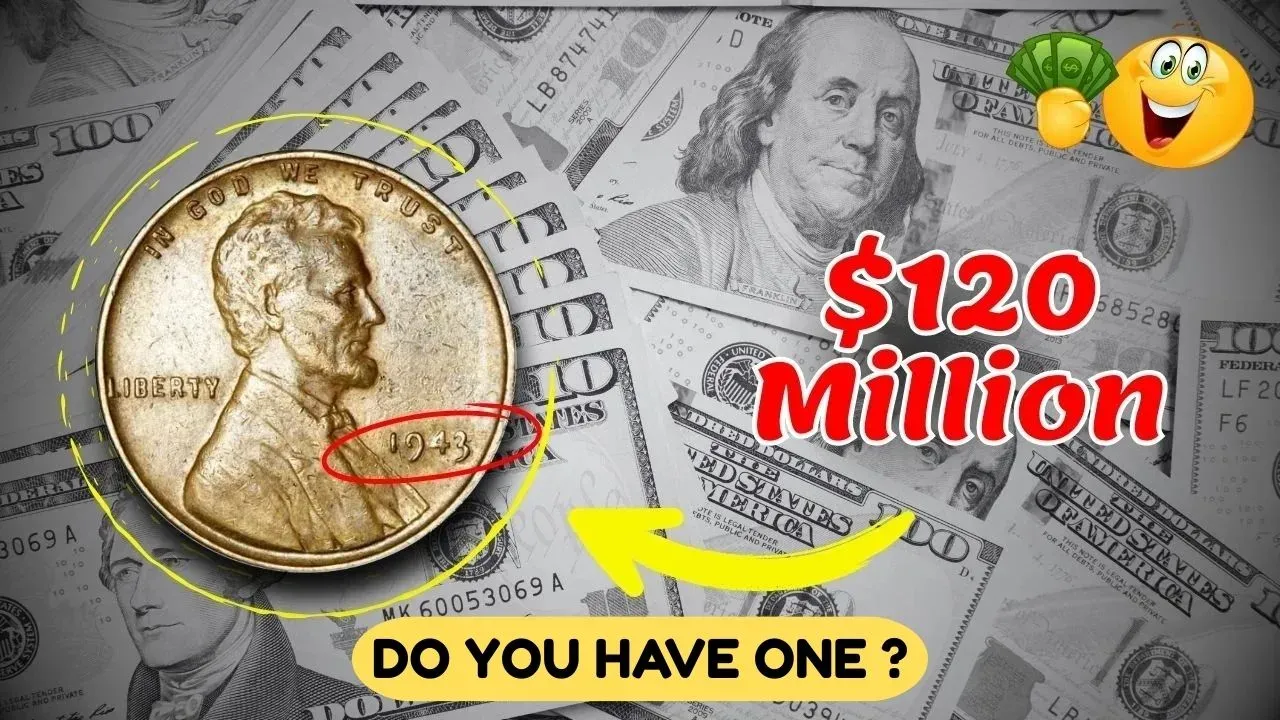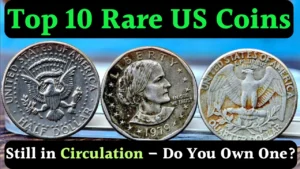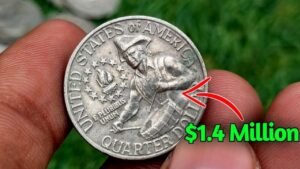You’re digging through a jar of loose change and pull out a penny that could be worth more than a mansion. Sounds like a fantasy, right? But the 1943 copper Lincoln Wheat Penny, rumored to fetch up to $120 million, is no myth. This tiny coin could be hiding in your pocket, waiting to change your life. Let’s explore why this penny is so legendary and how you can identify one.
The Lincoln Wheat Penny: A Slice of American History
First minted in 1909 to celebrate Abraham Lincoln’s 100th birthday, the Lincoln Wheat Penny was a groundbreaking coin. Designed by Victor David Brenner, it was the first U.S. coin to feature a real person instead of a symbolic figure like Lady Liberty. With Lincoln’s profile on the front and two wheat stalks on the back, it’s an iconic piece of Americana, produced until 1958.
Most Wheat Pennies are worth just a cent or two, but a few rare ones—especially those with minting errors—are worth thousands or even millions. The star of the show? The ultra-rare 1943 copper penny, a coin that’s sparked a frenzy among collectors.
Why the 1943 Copper Penny Is Worth Millions
During World War II, copper was critical for military supplies, so the U.S. Mint switched to zinc-coated steel for pennies in 1943. But a tiny mistake happened: a few copper planchets (coin blanks) from 1942 were accidentally used, creating the 1943 copper Lincoln Wheat Penny. With only about 20 known to exist, it’s one of the rarest coins in U.S. history.
Here’s why it’s so valuable:
- Extreme Rarity: Fewer than 20 authentic 1943 copper pennies are known.
- Wartime Error: The accidental use of copper during a steel-only year adds historical intrigue.
- Pristine Condition: Top-grade examples, certified by PCGS or NGC, can fetch millions. One sold for $1.7 million in 2010, with estimates for a perfect specimen reaching $120 million.
Even worn versions have sold for over $100,000, making every 1943 penny worth a second glance.
Other Valuable Lincoln Wheat Pennies to Watch For
The 1943 copper penny isn’t the only Wheat Penny with big potential. Here are other rare varieties to look for:
| Year & Variety | Why It’s Valuable | Potential Value |
|---|---|---|
| 1909-S VDB | Low mintage (484,000) with designer’s initials. | Up to $100,000+ |
| 1914-D | Scarce Denver issue, low mintage. | $1,500–$10,000 |
| 1922 Plain | Missing “D” mint mark error. | Up to $15,000 |
| 1931-S | Low-mintage San Francisco coin. | Up to $4,000 |
| 1955 Double Die | Doubled text error, highly collectible. | Up to $15,000 |
These coins, especially in great condition, can turn a handful of change into serious cash.
How to Spot a Valuable 1943 Copper Penny
Think you might have a treasure? Here’s how to check:
| Feature | What to Look For |
|---|---|
| Date | Must read “1943” clearly. |
| Mint Mark | Look for “D” (Denver), “S” (San Francisco), or no mark (Philadelphia) below the date. |
| Material | Copper pennies are reddish-brown and won’t stick to a magnet. Steel pennies are silver-gray and magnetic. |
| Weight | Copper pennies weigh ~3.11 grams; steel ones weigh ~2.7 grams. Use a precise scale. |
| Condition | Look for sharp details in Lincoln’s hair and the wheat stalks, with minimal wear. |
Pro Tip: Use a magnifying glass to spot errors like doubled text or off-center strikes. Never clean a coin—it can ruin its value. If you suspect a rare find, get it graded by PCGS or NGC.
Could It Still Be in Circulation?
Here’s the exciting part: some 1943 copper pennies might still be out there, hiding in piggy banks, coin rolls, or even your pocket change. Since they look similar to regular pennies, they could have been spent unknowingly for decades. Stories of valuable Wheat Pennies turning up in estate sales, old jars, or even gas station change keep collectors hopeful. In 2019, a family found a 1943 copper penny in an inherited collection that sold for over $200,000
The Thrill of Coin Collecting
Coin collecting isn’t just about money—it’s about holding history in your hands. The Lincoln Wheat Penny captures America’s story, from the Great Depression to World War II. The 1943 copper penny, born from a wartime mistake, is a numismatic legend that sparks the imagination. Whether you’re a seasoned collector or just curious, checking your change is a fun way to connect with the past.
Tips for Protecting and Selling Rare Coins
Found a potential gem? Here’s what to do:
- Handle Carefully: Hold coins by the edges to avoid fingerprints or scratches.
- Store Safely: Use acid-free flips or plastic holders to protect from moisture and oils.
- Get It Graded: Professional grading by PCGS or NGC confirms authenticity and value.
- Sell Smart: Use reputable auction houses (Heritage Auctions, Stack’s Bowers), coin dealers, or online platforms like eBay for serious buyers.
Final Thoughts: Check Your Change!
The $120 million 1943 copper Lincoln Wheat Penny is the ultimate treasure hunt. While the odds of finding one are slim, the possibility keeps collectors and casual folks alike checking their pennies. Other Wheat Pennies, like the 1909-S VDB or 1955 Double Die, can also bring in thousands. So, next time you fish a penny out of your change, take a closer look. That little coin might just be a life-changing piece of history.
FAQs About Lincoln Wheat Pennies
Q: How much is a 1943 copper penny worth?
A: Pristine examples could fetch up to $120 million, though verified sales have reached $1.7 million. Even worn ones can sell for over $100,000.
Q: How do I know if my 1943 penny is copper?
A: It should be reddish-brown, weigh ~3.11 grams, and not stick to a magnet. Steel pennies are silver-gray, magnetic, and lighter at ~2.7 grams.
Q: Are Lincoln Wheat Pennies still in circulation?
A: Yes, though rare. They can turn up in coin rolls, piggy banks, estate sales, or old collections.
Q: What other Wheat Pennies are valuable?
A: Look for 1909-S VDB, 1914-D, 1922 Plain, 1931-S, and 1955 Double Die coins, which can be worth thousands in good condition.
Q: Where can I sell a rare penny?
A: Reputable options include auction houses (Heritage Auctions, Stack’s Bowers), certified coin dealers, or online marketplaces like eBay. Always get it graded first.




